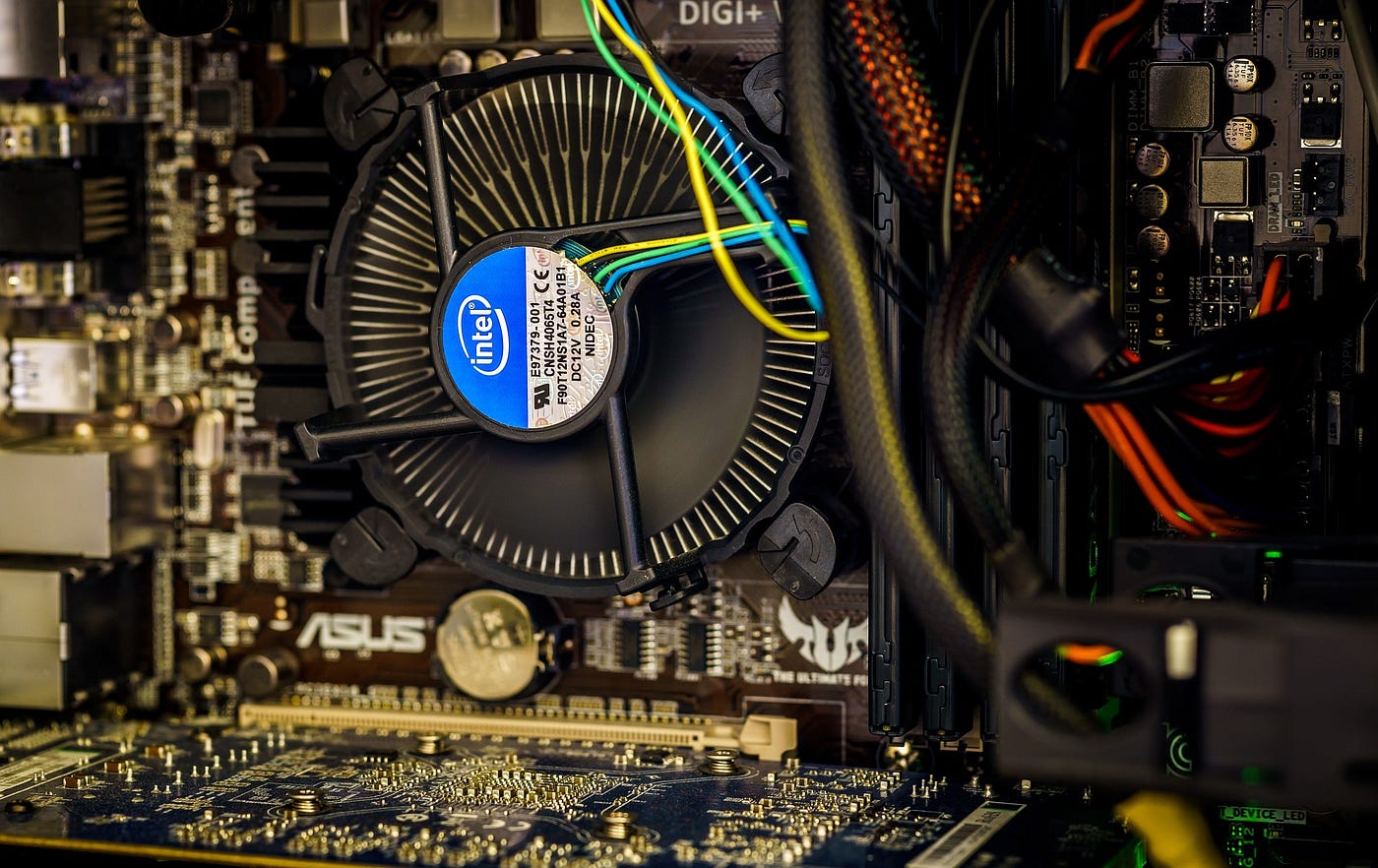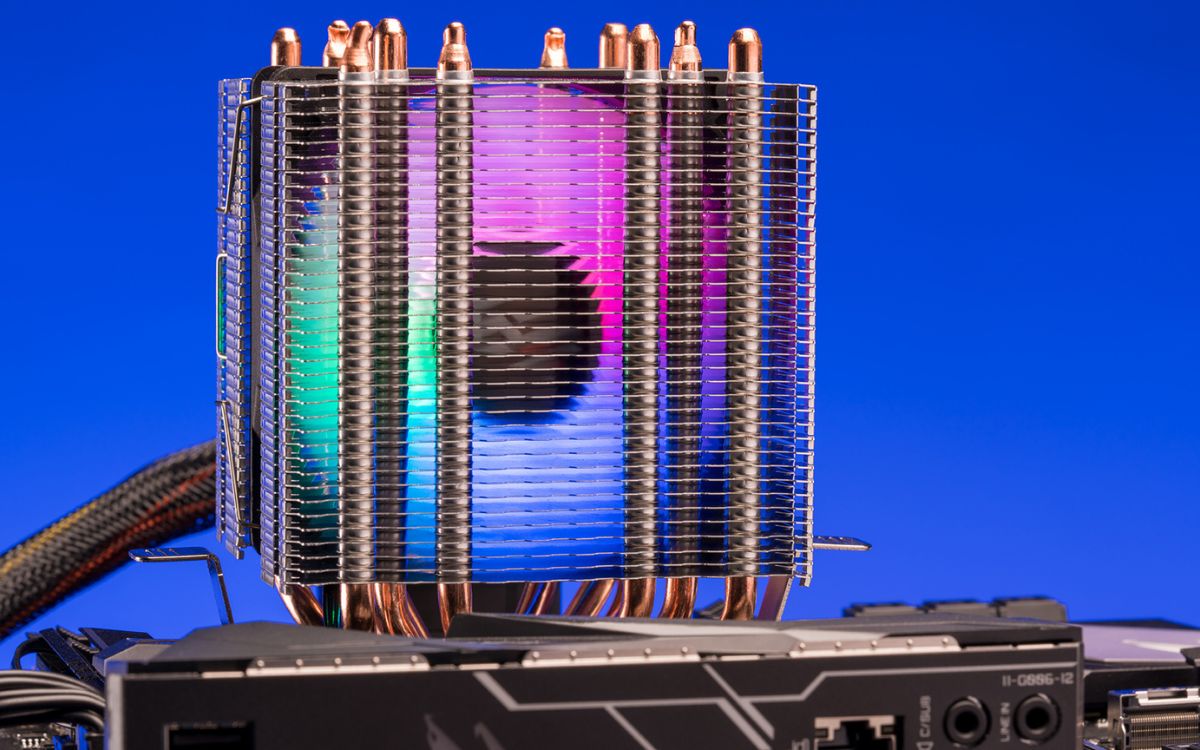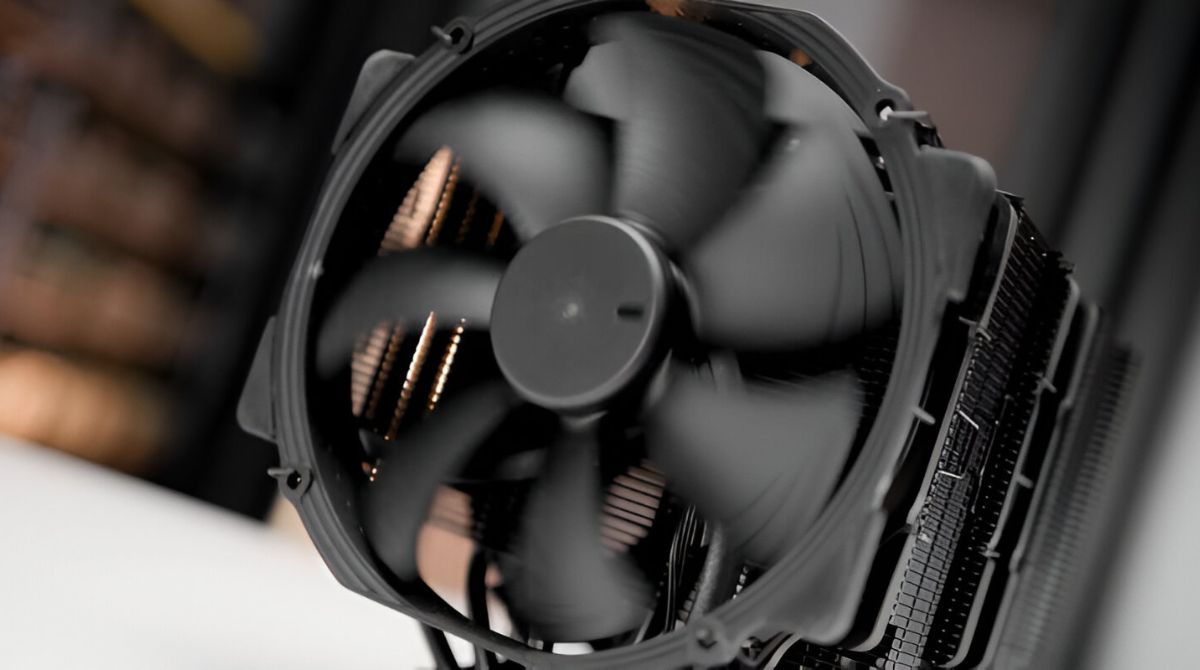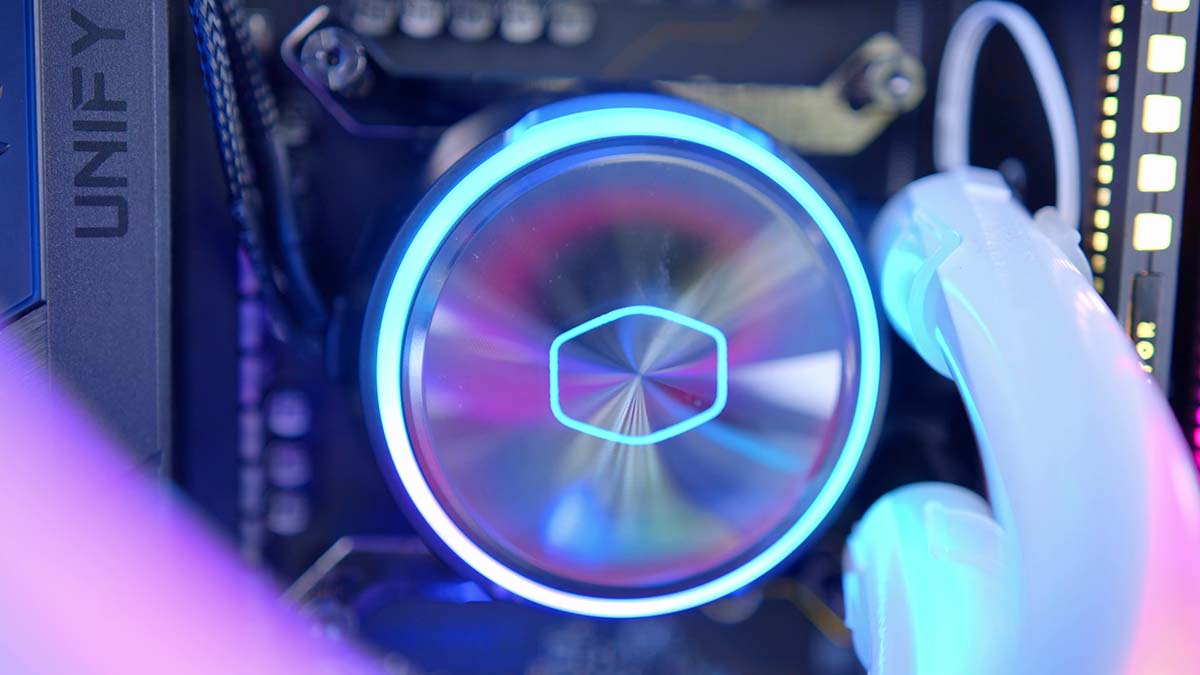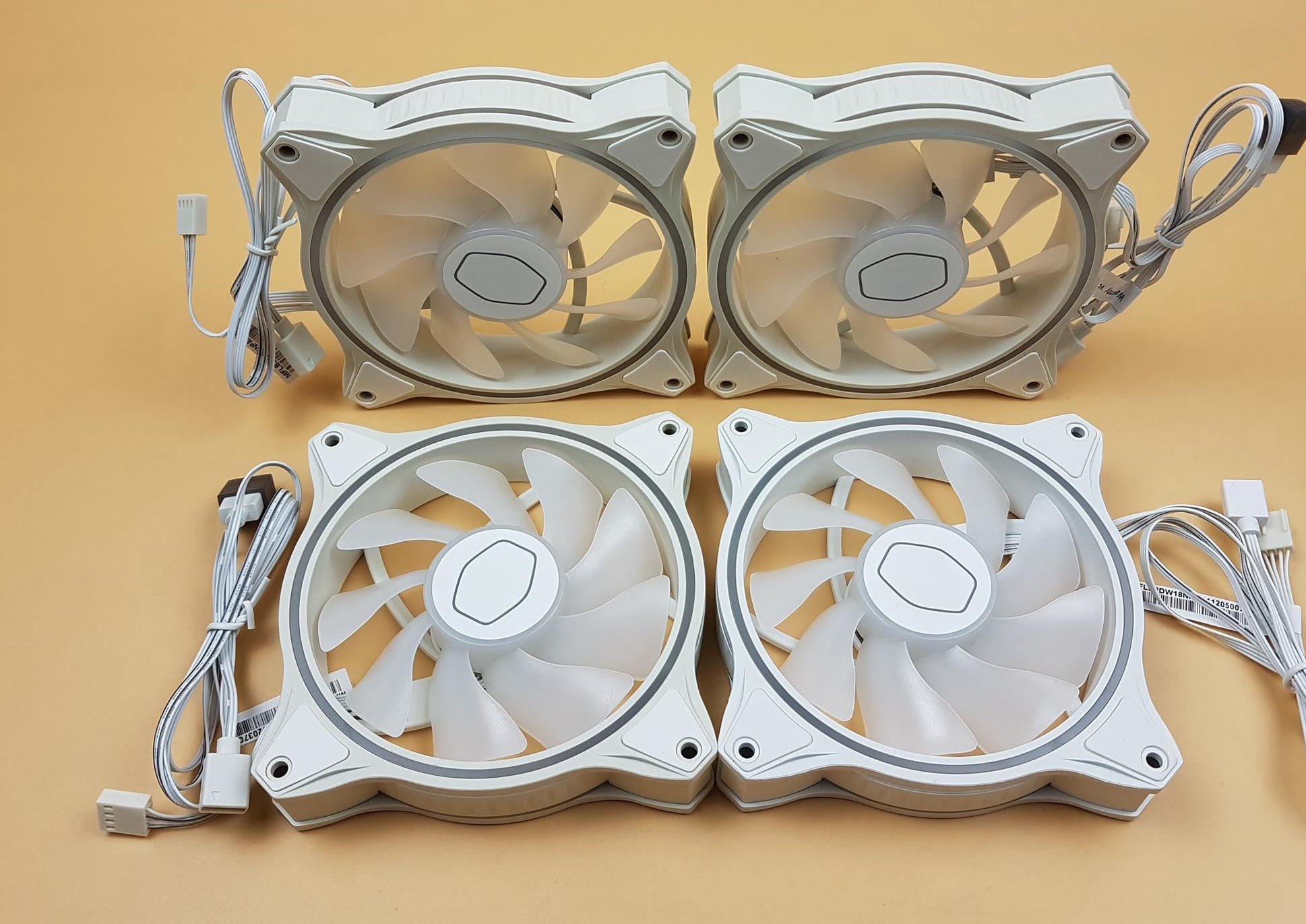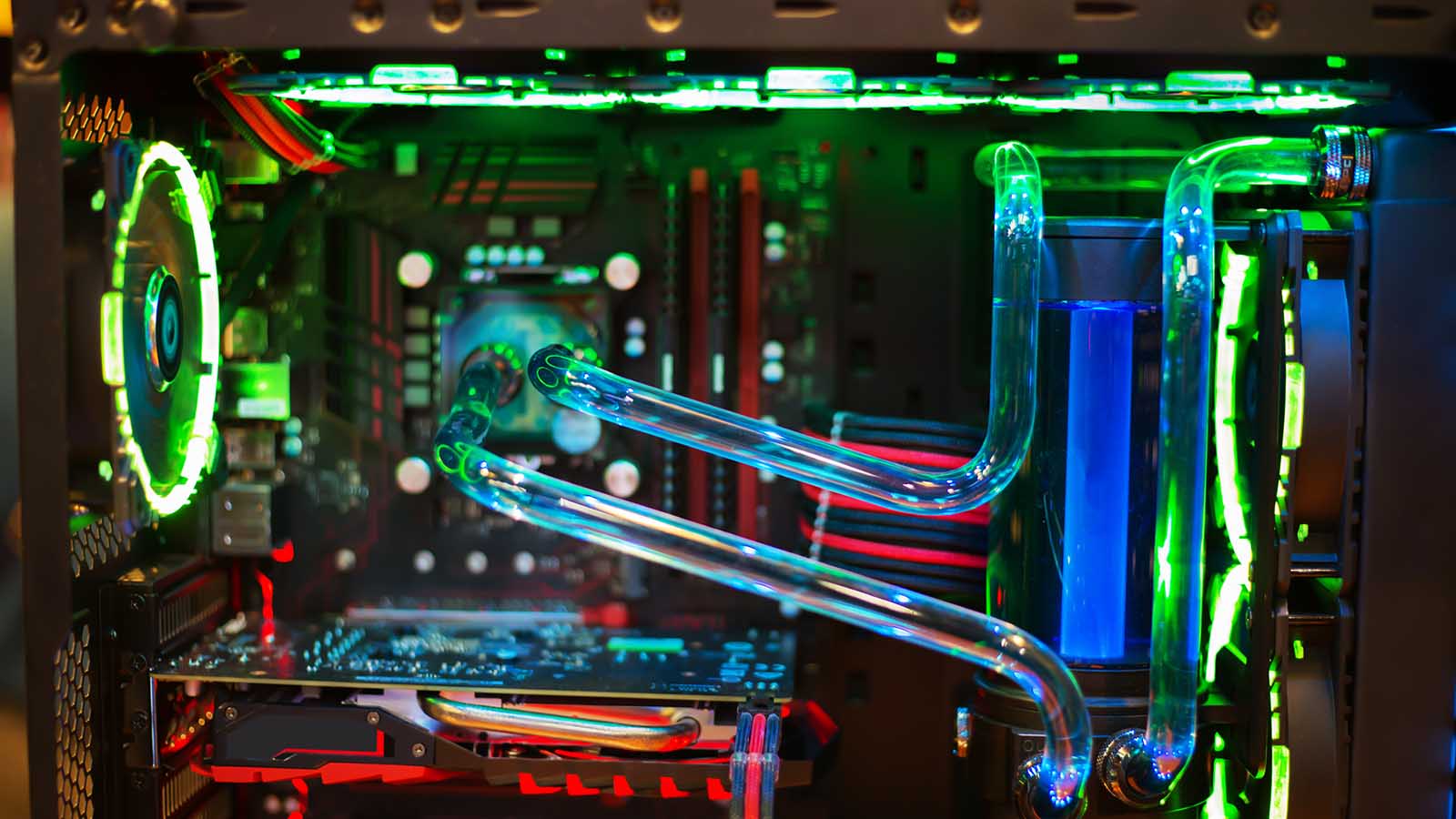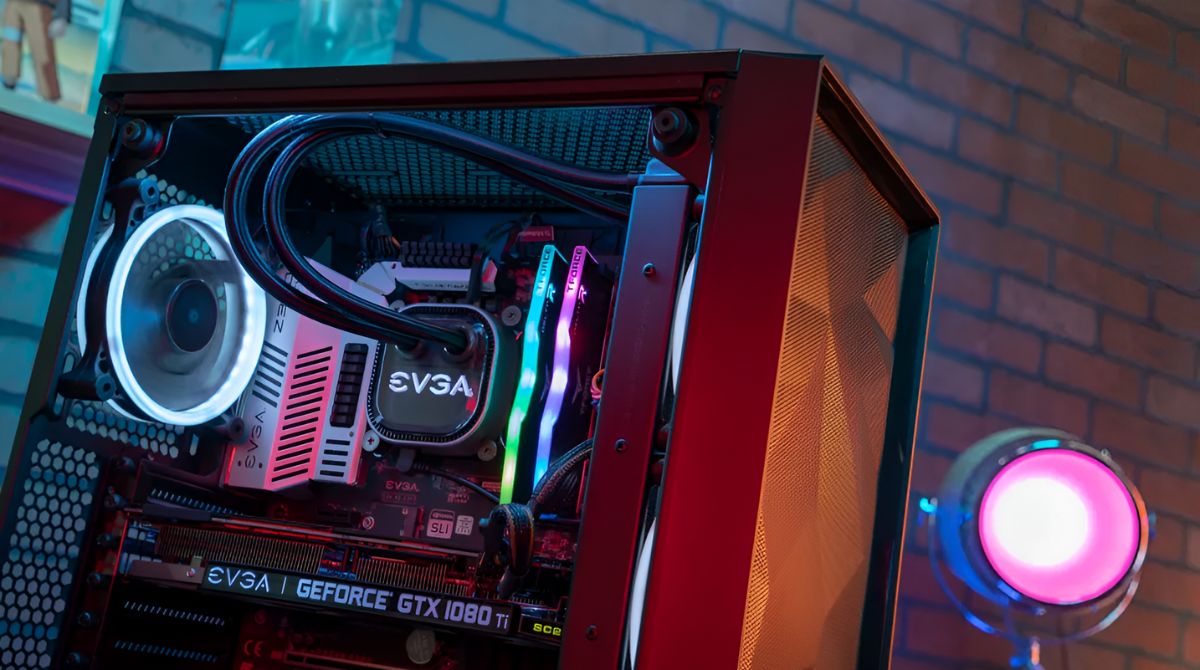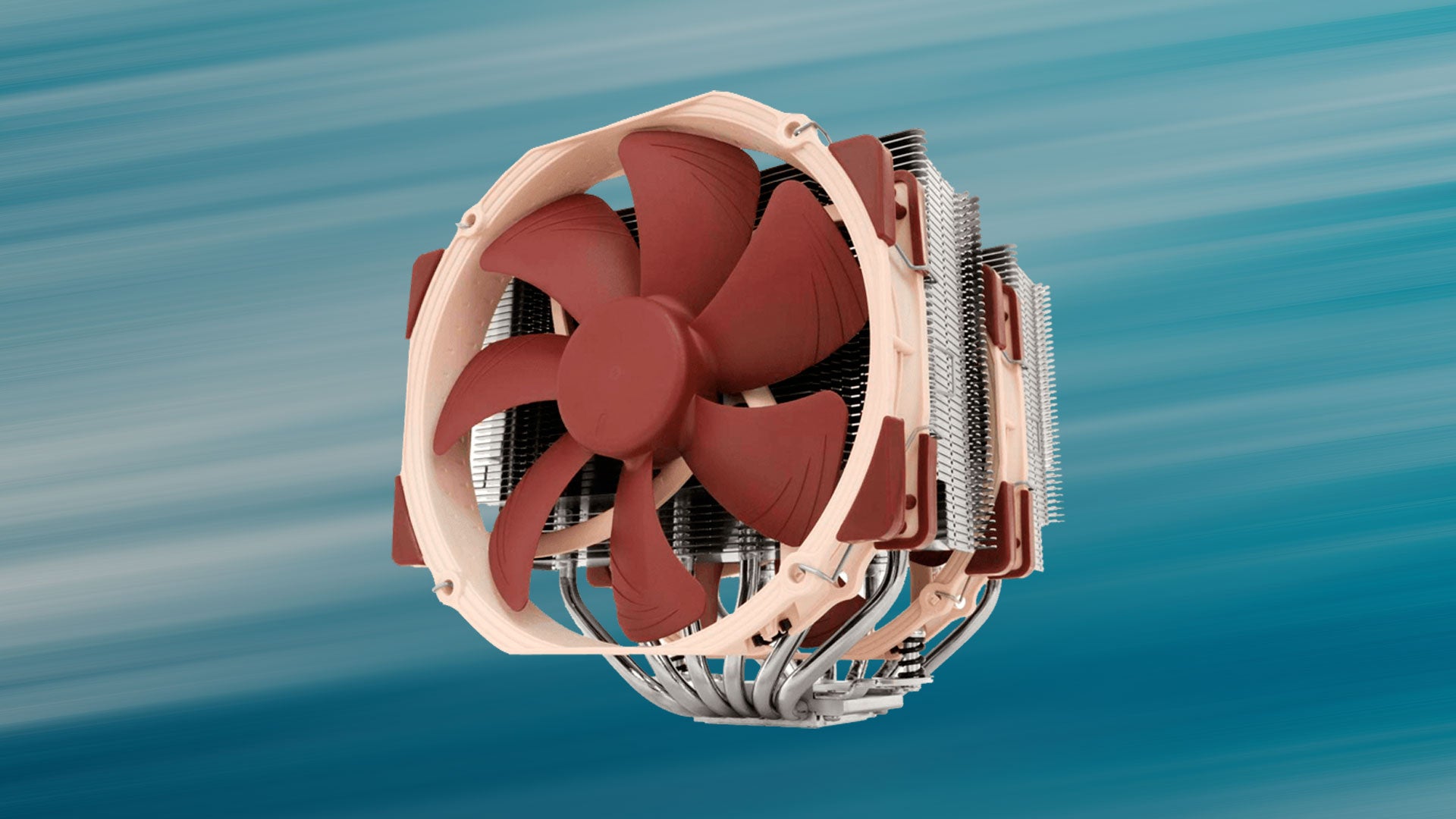Introduction
Welcome to the world of CPU cooler fans, where the battle against heat and noise begins. If you’ve ever owned a computer or built one yourself, you’re likely familiar with these small but mighty fans that keep your CPU cool under heavy workloads. But have you ever thought about how loud they can get?
A CPU cooler fan is a crucial component in any computer system. Its primary function is to dissipate heat generated by the CPU, preventing it from overheating and causing performance issues. However, this essential cooling mechanism often comes with a downside – noise.
The level of noise produced by a CPU cooler fan can vary significantly depending on several factors. From the type of fan used to the speed at which it operates, these factors play a crucial role in determining just how loud your CPU cooler fan can be.
In this article, we’ll explore the world of CPU cooler fan noise and its impact on your computing experience. We’ll dive into the different factors that affect the loudness of a CPU cooler fan and explore some strategies to reduce noise levels. Whether you’re a seasoned computer enthusiast or new to the world of PC building, understanding the noise level of your CPU cooler fan is essential for creating a more pleasant computing environment.
So, let’s untangle the web of noise and discover just how loud a CPU cooler fan can be and how we can keep it in check.
What is a CPU Cooler Fan?
A CPU cooler fan, also known as a heatsink fan, is a component designed to cool the CPU (Central Processing Unit) of a computer system. The CPU is one of the most critical and power-hungry components in a computer, generating a substantial amount of heat during operation. Without proper cooling, the CPU can overheat, leading to performance degradation, instability, or even permanent damage.
The CPU cooler fan works in conjunction with a heat sink, which is a metal component that absorbs and disperses the heat generated by the CPU. The fan’s primary role is to facilitate the airflow over the heat sink, carrying away the heat and maintaining the CPU’s optimal temperature. By constantly drawing cool air over the heat sink and expelling hot air, the CPU cooler fan ensures that the CPU remains within safe operating temperatures.
CPU cooler fans come in various shapes and sizes, ranging from small and compact to large and high-performance models. They are typically categorized into two main types: air coolers and liquid coolers. Air coolers utilize a combination of a fan and heat sink made of metal fins to cool the CPU, while liquid coolers use a pump and radiator system to circulate coolant and dissipate heat.
In terms of installation, CPU cooler fans can be either stock coolers or aftermarket coolers. Stock coolers are typically included with a CPU at the time of purchase and provide an adequate cooling solution for most users. Aftermarket coolers, on the other hand, are third-party solutions that offer superior cooling performance and often operate at lower noise levels.
Overall, a CPU cooler fan is an indispensable component in any computer system, ensuring the proper functioning and longevity of the CPU. Understanding its role and characteristics is essential for maintaining optimal system performance and creating a quieter computing environment.
How do we measure loudness?
Measuring the loudness of a CPU cooler fan involves quantifying the sound produced by the fan and expressing it in a measurable unit. The most common unit used to measure loudness is decibels (dB), which is a logarithmic scale that quantifies the intensity of sound.
When it comes to CPU cooler fans, the loudness is typically measured using the A-weighted decibel scale (dBA). This scale takes into account the frequency response of the human ear, which is less sensitive to low and high frequencies. By applying a weighting filter, the dBA scale provides a more accurate representation of the perceived loudness by humans.
To measure the loudness of a CPU cooler fan, specialized equipment called a sound level meter is often used. The sound level meter captures sound waves and calculates the sound pressure level in decibels. The microphone of the sound level meter is positioned at a specific distance from the fan, usually around one meter, to ensure consistent measurements across different fans and environments.
It is important to note that the reported loudness levels of CPU cooler fans can vary depending on the testing methodology and the environment in which the measurement is taken. Manufacturers often provide noise level specifications for their fans, which are measured in a controlled lab setting. These specifications can give you a general idea of how loud a fan might be, but real-world performance may differ due to factors such as case airflow, fan speed settings, and ambient noise.
Furthermore, it is worth mentioning that the perceived loudness of a CPU cooler fan can also be subjective and vary from person to person. Factors such as individual hearing sensitivity and personal tolerance for noise can influence how loud a fan sounds to an individual.
Overall, measuring the loudness of a CPU cooler fan provides valuable information for consumers looking to choose a fan that aligns with their desired noise levels. Understanding the measurement process and considering other factors that can influence perceived loudness will help in selecting the right fan for your specific needs.
What factors affect the loudness of a CPU cooler fan?
The loudness of a CPU cooler fan can be influenced by various factors, which contribute to the overall noise level produced by the fan. Understanding these factors can help you determine how to minimize the noise and create a quieter computing environment. Let’s explore the key factors that affect the loudness of a CPU cooler fan:
- Fan Design: The design of the fan itself plays a significant role in determining its noise level. Factors such as the size and shape of the fan blades, the number of blades, and the pitch angle affect how efficiently the fan moves air and, subsequently, the noise it produces. Fans with larger blades and lower blade angles tend to be quieter compared to smaller, higher-pitched ones.
- Fan Speed: The speed at which the fan operates directly impacts its noise level. The faster the fan spins, the more noise it generates. This is because higher speeds cause air turbulence and result in increased airflow noise. Fans with adjustable speed settings or PWM (Pulse Width Modulation) control allow you to fine-tune the fan speed to balance between cooling performance and noise levels.
- Bearing Type: The type of bearing used in the fan can affect both its lifespan and noise level. Sleeve bearings, often found in budget fans, tend to generate more noise as they wear out over time. Ball bearings and fluid dynamic bearings (FDB) are generally quieter and offer longer lifespan, but can be more expensive.
- Case Design: The design and layout of your computer case can also affect the noise level of the CPU cooler fan. A well-ventilated case with proper airflow allows the fan to work more efficiently, reducing the need for high fan speeds and, consequently, lowering noise levels. On the other hand, a cramped or poorly-ventilated case can lead to increased temperatures, forcing the fan to work harder and produce more noise.
- Fan Placement: The placement of the CPU cooler fan within the case can impact its noise level. Fans positioned closer to the side panel or other components may cause increased turbulence and noise due to restricted airflow. Optimal fan placement, with adequate clearance from obstacles and proper airflow directions, can help minimize noise.
By considering these factors when selecting a CPU cooler fan and optimizing your system’s cooling setup, you can effectively reduce the noise produced by the fan while still maintaining optimal cooling performance. Finding the right balance between cooling efficiency and noise level is crucial for creating a pleasant and quiet computing environment.
Common noise levels of CPU cooler fans
CPU cooler fans typically operate within a range of noise levels depending on various factors such as fan design, speed, and bearing type. Understanding the common noise levels associated with CPU cooler fans can help you choose a fan that suits your desired noise preferences. Here are the general noise levels you can expect from CPU cooler fans:
- Quiet Fans (Below 20 dBA): These fans are designed to operate at very low noise levels, making them nearly silent. They are ideal for users who prioritize a noise-free computing experience, such as those building HTPCs (Home Theater PCs) or working in noise-sensitive environments.
- Moderately Quiet Fans (20-25 dBA): Fans in this range offer a good balance between cooling performance and noise level. They provide adequate cooling while maintaining a relatively quiet operation. These fans are suitable for most standard computer setups and are a popular choice among general users.
- Mid-range Fans (25-30 dBA): Fans in this category may produce a noticeable but tolerable level of noise. They offer decent cooling capabilities and are often found in stock CPU cooler configurations. While not the quietest option, they still provide adequate performance for most gaming and office setups.
- High-performance Fans (30-35 dBA): These fans are designed for maximum cooling performance, which often comes at the cost of increased noise levels. They feature larger fan blades and higher speeds, resulting in louder operation. High-performance fans are popular among overclockers and users with demanding computing tasks.
- Enthusiast Fans (Above 35 dBA): These fans prioritize cooling performance above all else and can generate significant noise levels. Enthusiast-grade fans are typically used in extreme gaming rigs or specialized applications that require exceptional cooling capabilities. Their noise levels may be less suitable for noise-conscious users.
It is essential to note that the reported noise levels provided by manufacturers are typically measured in ideal conditions and may not accurately represent real-world scenarios. Additionally, noise perception can vary from person to person, so it is recommended to read user reviews and consider personal preferences when choosing a CPU cooler fan.
Ultimately, selecting a CPU cooler fan with an appropriate noise level is a matter of balancing your cooling requirements with your tolerance for noise. By understanding the noise levels associated with different fan types, you can make an informed decision when choosing a CPU cooler fan that best suits your needs.
Strategies for reducing the noise of your CPU cooler fan
If the noise from your CPU cooler fan is becoming a nuisance, there are several strategies you can employ to minimize it and create a quieter computing environment. Let’s explore some effective techniques for reducing the noise of your CPU cooler fan:
- Choose a high-quality fan: Investing in a high-quality CPU cooler fan can make a significant difference in noise reduction. Look for fans that have features like larger blades, lower blade angles, and advanced bearing technologies. These fans are designed to operate at lower noise levels while still providing efficient cooling.
- Control the fan speed: Many modern CPU cooler fans come with adjustable speed settings or support PWM (Pulse Width Modulation) control. By reducing the fan speed, you can decrease noise levels without sacrificing too much cooling performance. Experiment with different speed settings to find the optimal balance between noise and cooling.
- Improve case airflow: Proper airflow within your computer case can help reduce the workload on the CPU cooler fan, allowing it to operate at lower speeds with less noise. Ensure that the case has adequate ventilation and clearance for the fan to draw in cool air and expel hot air efficiently. Consider installing additional case fans or optimizing the fan placement for optimal airflow.
- Use rubber mounting pads: Vibrations can contribute to the overall noise produced by the fan. Mounting the CPU cooler fan using rubber pads or dampeners can help absorb vibrations and reduce the transmission of noise to the case. This can significantly minimize the perceived noise level and create a quieter computing experience.
- Clean the fan and heat sink: Dust accumulation can lead to increased friction and reduced efficiency of the CPU cooler fan, resulting in louder operation. Regularly cleaning the fan blades and heat sink fins can help maintain optimal airflow and prevent the fan from working harder than necessary.
- Consider aftermarket CPU coolers: Stock CPU coolers that come bundled with processors may not always provide the best cooling performance or noise levels. Upgrading to an aftermarket CPU cooler can often result in quieter operation due to their superior design and efficiency. Look for CPU coolers that have positive reviews for their noise levels and cooling performance.
By implementing these strategies, you can effectively reduce the noise generated by your CPU cooler fan and enjoy a more peaceful computing experience. Experiment with different techniques and find the combination that works best for your specific setup and noise preferences.
Conclusion
CPU cooler fans play a vital role in maintaining optimal temperatures for your CPU, but the noise they produce can be a concern for many users. Understanding how to measure, control, and reduce the noise levels of your CPU cooler fan is crucial for creating a quieter computing environment.
In this article, we explored the world of CPU cooler fan noise and its impact on your computing experience. We discussed how the loudness of a CPU cooler fan is measured using decibels (dB) and the A-weighted decibel scale (dBA). By understanding the measurement process, you can better interpret noise level specifications provided by manufacturers.
We also delved into the factors that affect the loudness of a CPU cooler fan. Fan design, speed, bearing type, case design, and fan placement all play a significant role in determining noise levels. By considering these factors, you can choose a fan that aligns with your desired noise preferences while still providing adequate cooling performance.
Furthermore, we explored strategies for reducing the noise of your CPU cooler fan. From choosing a high-quality fan and controlling the fan speed to improving case airflow and cleaning the fan and heat sink, these methods can significantly minimize noise levels and create a more enjoyable computing experience.
Remember that finding the right balance between cooling performance and noise level is subjective and may require some experimentation. Personal tolerance for noise and specific computing requirements can influence your choice of CPU cooler fan and noise reduction strategies.
By implementing these strategies and considering the factors that affect the loudness of your CPU cooler fan, you can create a quieter and more comfortable computing environment. So, dive into the world of CPU cooler fan noise and take control over the sound levels for a better computing experience.







